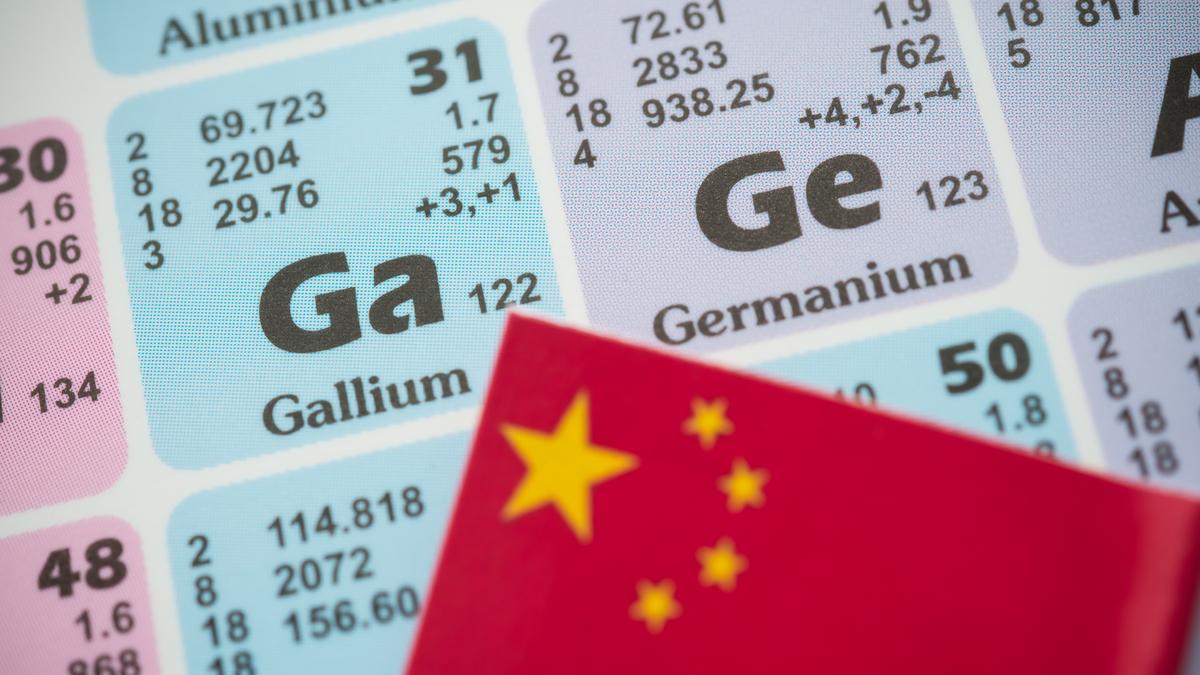‘For nations such as India, these events are also a wake-up call — to improve domestic mineral exploration and production capacity’
| Photo Credit: Getty Images/iStockphoto
On January 2, 2025, China’s Ministry of Commerce (MOFCOM) expanded its export control list by including 28 entities from the United States, effectively restricting their access to a swath of items classified under dual-use export controls. At the core of these restrictions lies minerals and rare and refined materials that are vital for high-technology applications such as in aerospace, semiconductors, batteries, and advanced electronics. Beijing’s list encompasses tungsten, gallium, magnesium, beryllium, hafnium, lithium-6 (isotope), and others — minerals with uses ranging from chip production to speciality alloys.
This is not the first time that China has weaponised the exports of its critical minerals. And it is an approach that is strategic and calculated. Beijing primarily targets minerals that are deemed to be critical by western nations and their allies, especially those essential for semiconductors, batteries, and high-tech manufacturing. However, China carefully balances these decisions against two constraining factors: it avoids controlling minerals which are heavily dependent on western raw material imports. And it refrains from actions that could disrupt its domestic industrial enterprises or export-dependent sectors. This strategic calculus was evident in China’s rare earth minerals embargo against Japan in 2010, its recent restrictions on antimony, gallium, and germanium exports, and its ban, in December 2023, on rare earth extraction and processing technologies.
The situation in India
Meanwhile, policymakers in the United States and elsewhere are becoming increasingly concerned. These developments underscore a larger trend: the competition for critical minerals has become a fulcrum of international economic diplomacy. For nations such as India, these events are also a wake-up call — to improve domestic mineral exploration and production capacity.
India’s push for critical minerals development has faced stubborn challenges. In 2023, lithium deposits that were found in Jammu and Kashmir’s Reasi district made headlines, hinting at a game-changer moment for India’s energy transition. However, a little over a year later, the story remains lacklustre: no company has shown interest in bidding for these resources, and the block remains in limbo. Unfortunately, this is not an isolated incident. Government data show that only 48% (24 out of 49) of the mineral blocks available for auction in recent years have been auctioned.
This lack of market enthusiasm cannot be pinned entirely on government negligence. Over the last three years, the Union government has introduced measures to spur activity in critical minerals. The Ministry of Mines identified 30 critical minerals that are deemed essential for national security. And before that, the Union government set up a designated body, Khanij Bidesh India Ltd. (KABIL), which has been tasked with obtaining overseas investments in critical minerals such as lithium and cobalt. Parliament passed the Mines and Minerals (Development and Regulation) Amendment Act, 2023, lifting restrictive classifications on some rare earth elements that used to be considered ‘atomic minerals’. These reforms theoretically opened the door for greater private-sector investment and technology sharing.
Reforms and results
A key highlight of the 2023 amendments is the introduction of an ‘exploration license’, devised to attract specialised resource exploration agencies, including foreign companies, to survey potentially rich but geologically challenging deposits. Instead of having to commit to a full-scale mining operation that can take over a decade or more to turn profitable, these exploratory firms can now participate in reconnaissance and prospecting alone. The law also promises to reimburse 50% of the exploration expenditure once mining begins, aiming to de-risk early-stage operations.
Despite these promising reforms, the results have been tepid. Only a handful of exploration licences for minerals such as lithium, rare earth elements, and graphite have been cleared, and those mostly went to Indian public sector firms. Foreign participation is sparse, and further downstream, mining license auctions for critical minerals have largely stalled.
One explanation is that India’s resource classification system is outdated, leaving miners unsure about the commercial viability of mineral blocks. Exploration levels — often categorised under international norms as G1, G2, G3, or G4 — require progressively detailed geological data on ore grade and quantity. Many auctioned blocks in India have yet to reach advanced exploration status, making them riskier to prospective bidders. That said, a more puzzling factor is the low demand for exploration licences themselves — an option that should, in principle, help de-risk investments but evidently has not had the intended effect.
Fiscal incentives may be essential
This brings us to the essential role of high-quality data. Exploration is at the heart of mitigating ‘information asymmetry’, where potential buyers (mining companies) and the seller (government) do not share a clear view of the resource’s true value. Without robust geological surveys, many bidders discount their offers or abstain entirely. The result is suboptimal auctions, with some potentially valuable blocks simply overlooked.
A possible remedy is to offer larger upfront fiscal incentives during the exploration phase. In other words, the solution might be to approach critical minerals extraction as a semiconductor fabrication project. In chip manufacturing —another sector with enormous upfront costs and slow returns — India has taken an aggressive approach, pledging direct capital support early in the construction phase. A similar model could work for critical minerals, offsetting immediate exploration costs instead of reimbursing them only after production begins. Upfront capital support for exploration would resolve a market failure and help unlock value many times over in downstream mining, exploration, sales, and exports.
Rakshith Shetty is a Research Analyst at the Takshashila Institution, Bengaluru. Pranay Kotasthane is the Deputy Director at the Takshashila Institution, Bengaluru
Published – January 23, 2025 12:08 am IST

